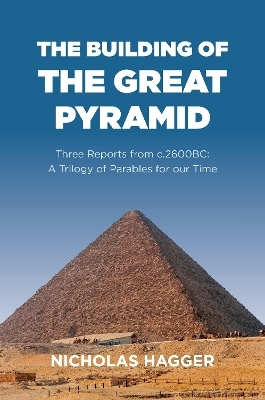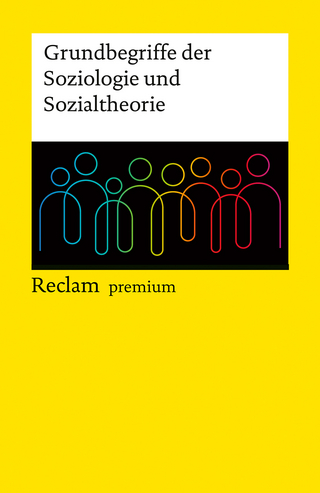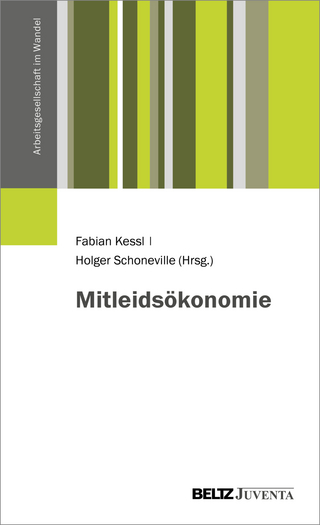
Building of the Great Pyramid, The
Three Reports from c.2600BC: A Trilogy of Parables for our Time
Seiten
2024
Liberalis (Verlag)
978-1-78535-159-4 (ISBN)
Liberalis (Verlag)
978-1-78535-159-4 (ISBN)
An official looking at Giza shares his concerns about the building of the Great Pyramid.
When he was ten Nicholas Hagger’s dentist, Howard Carter’s brother, told him about the opening of Tutankhamun’s tomb, and he was later given a shawabti (funerary figurine) of Tutankhamun that came from the tomb. As a teenager he was fascinated by the Great Pyramid, and in 1963 he wrote ‘The Riddle of the Great Pyramid’ as a parable for our time. Written as a report by an official living at Giza during the construction in progress in c.2600BC, it explains the massive organisation and endeavour that has gone into the building so far when those involved in the work do not know its purpose or why it is being built. The notion of the Great Pyramid as a symbol of bafflement and a microcosm of Western society has haunted Hagger throughout his working life. After visiting it in 2005 he wrote a sequel by the same official, ‘The Meaning and Purpose of the Great Pyramid’, which carries the story forward, and after another visit in 2020 he wrote ‘The Great Pyramid as a House of Eternity’, which completed a Pyramid trilogy. These three reports, which have followed research into the building of the Great Pyramid for 57 years, are now brought out together with illustrations that throw light on the events described and reveal the Pharaoh’s face on the Sphinx. Collectively they offer a factual account of the construction soon after 2600BC and the aspirations of humans seeking a life beyond death before the birth of the established religions, and as parables in the tradition of Swift, they profoundly question the modern world of work and organisation of Western society. They present a quest for eternity that is also a self-aggrandising folly at the beginning of recorded history, and illustrate the dialectic between a quest for Reality and condemnation of follies and vices that Hagger identified as the fundamental theme of world literature in A New Philosophy of Literature.
When he was ten Nicholas Hagger’s dentist, Howard Carter’s brother, told him about the opening of Tutankhamun’s tomb, and he was later given a shawabti (funerary figurine) of Tutankhamun that came from the tomb. As a teenager he was fascinated by the Great Pyramid, and in 1963 he wrote ‘The Riddle of the Great Pyramid’ as a parable for our time. Written as a report by an official living at Giza during the construction in progress in c.2600BC, it explains the massive organisation and endeavour that has gone into the building so far when those involved in the work do not know its purpose or why it is being built. The notion of the Great Pyramid as a symbol of bafflement and a microcosm of Western society has haunted Hagger throughout his working life. After visiting it in 2005 he wrote a sequel by the same official, ‘The Meaning and Purpose of the Great Pyramid’, which carries the story forward, and after another visit in 2020 he wrote ‘The Great Pyramid as a House of Eternity’, which completed a Pyramid trilogy. These three reports, which have followed research into the building of the Great Pyramid for 57 years, are now brought out together with illustrations that throw light on the events described and reveal the Pharaoh’s face on the Sphinx. Collectively they offer a factual account of the construction soon after 2600BC and the aspirations of humans seeking a life beyond death before the birth of the established religions, and as parables in the tradition of Swift, they profoundly question the modern world of work and organisation of Western society. They present a quest for eternity that is also a self-aggrandising folly at the beginning of recorded history, and illustrate the dialectic between a quest for Reality and condemnation of follies and vices that Hagger identified as the fundamental theme of world literature in A New Philosophy of Literature.
Nicholas Hagger is the author of more than 50 books that include a substantial literary output and innovatory works within history, philosophy, literature and international politics and statecraft. As a man of letters he has written over 2,000 poems, two poetic epics, five verse plays, 1,200 short stories, two travelogues and three masques. In 2016 he was awarded the Gusi Peace Prize for Literature, and in 2019 the BRICS silver medal for 'Vision for Future'. He lives in Essex, UK.
| Erscheinungsdatum | 01.06.2024 |
|---|---|
| Sprache | englisch |
| Maße | 150 x 230 mm |
| Themenwelt | Sozialwissenschaften ► Soziologie ► Allgemeines / Lexika |
| ISBN-10 | 1-78535-159-1 / 1785351591 |
| ISBN-13 | 978-1-78535-159-4 / 9781785351594 |
| Zustand | Neuware |
| Haben Sie eine Frage zum Produkt? |
Mehr entdecken
aus dem Bereich
aus dem Bereich
Buch | Softcover (2024)
Phillip Reclam (Verlag)
12,80 €


